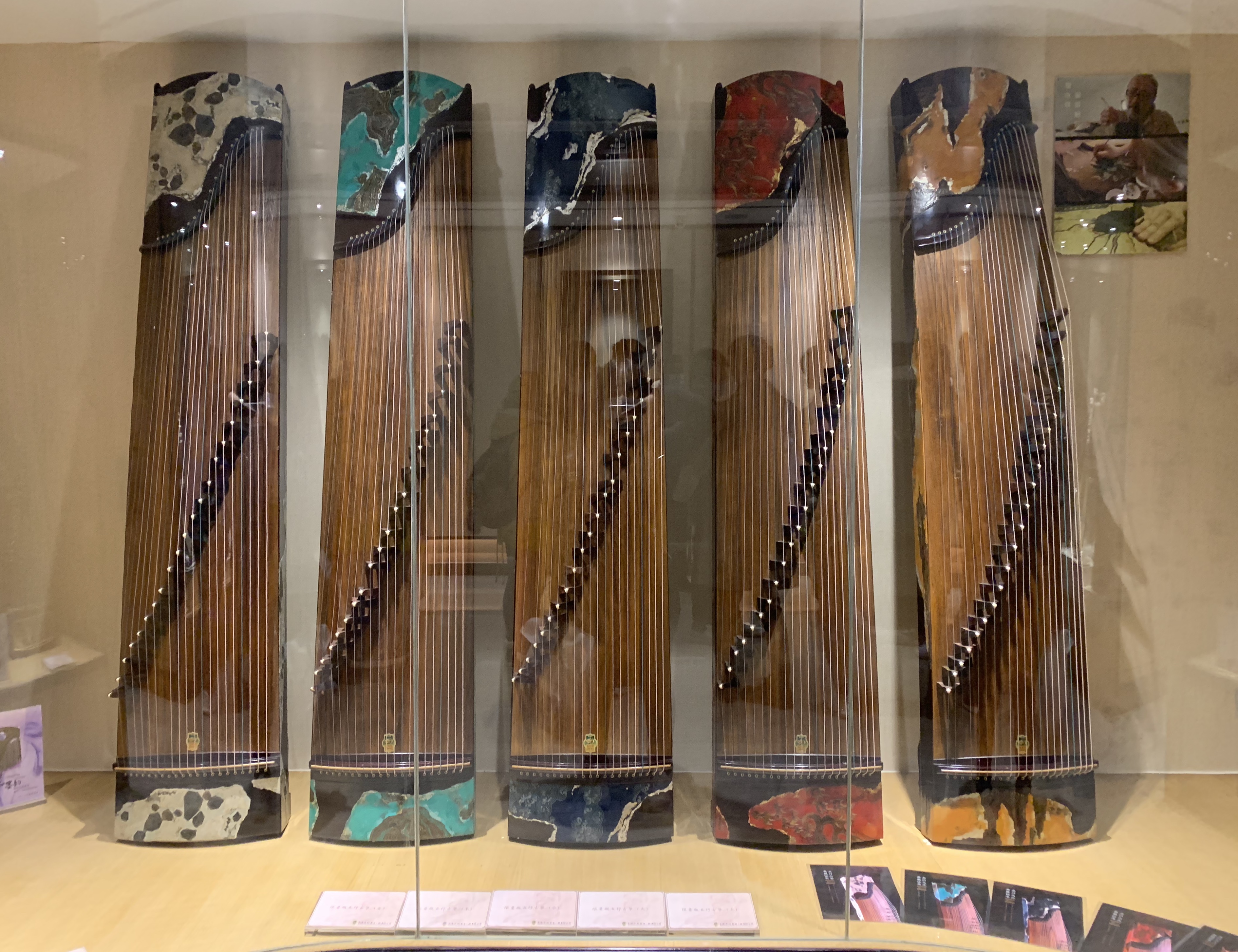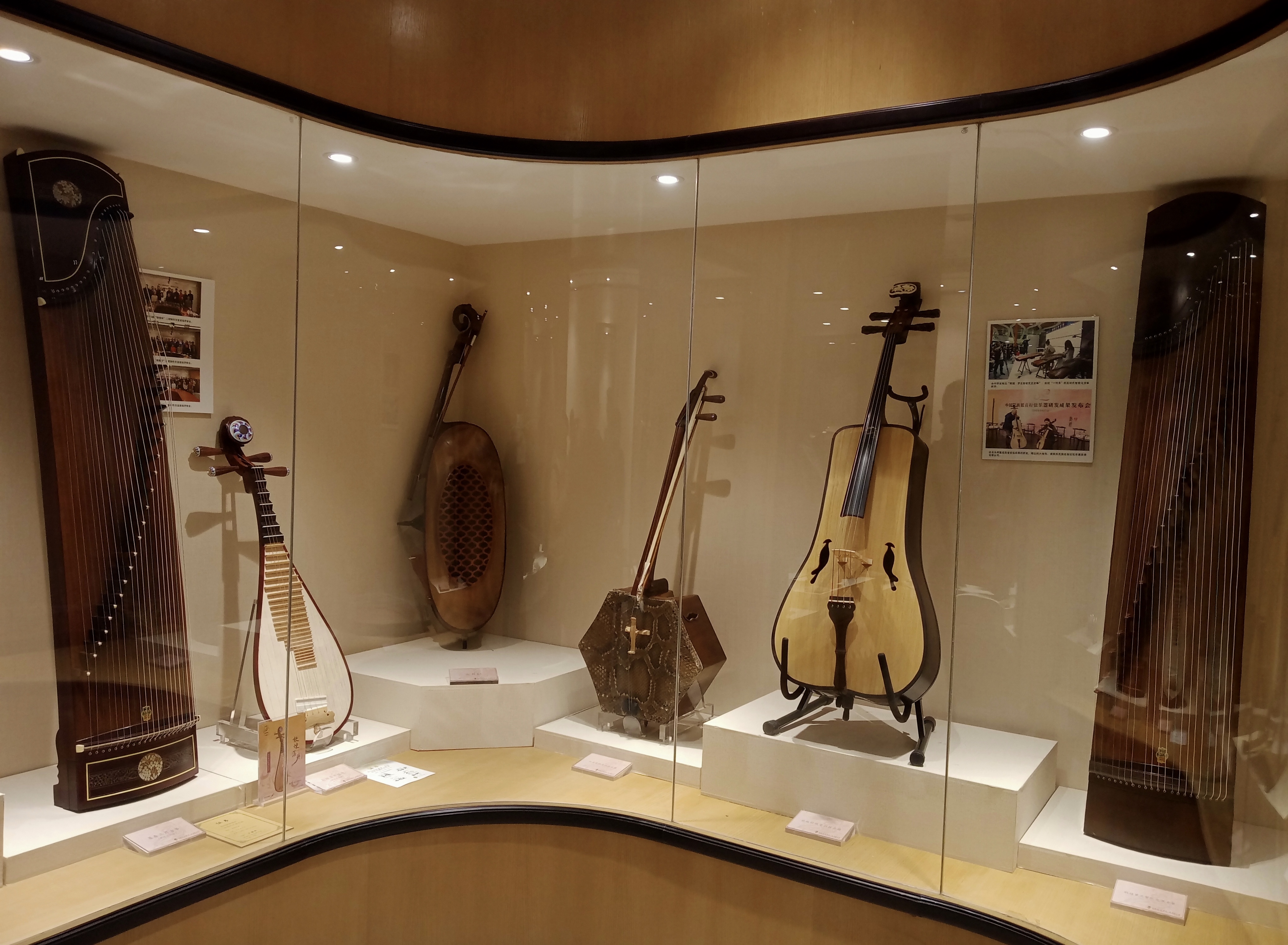
On November 23, a visit to the Chinese Ethnic Musical Instrument Museum was co-organized by SJTU DiXiao Chinese Instruments Association and International Students Union of School of Mechanical and Engineering.

The Chinese Ethnic Musical Instrument Museum is in Xinzhuang, southwest of Shanghai. It is the most abundant, largest and distinctive national musical instrument museum in China. There are seven exhibition areas in the exhibition hall, including musical instrument structure disassembly display area, large conference instrument display area, Chinese musical instrument exhibition area, imitation of Dunhuang fresco musical instrument exhibition area, cross-border fusion musical instrument exhibition area, etc., reflecting the diversity, plasticity, and rich creativity of Chinese ethnic musical instruments. The Chinese Ethnic Musical Instrument Museum has a long-established Chinese brand "Dunhuang", which is currently the leading manufacturer of ethnic musical instruments in China. Under the guidance of the docents, the students first learned about the culture and development of the company, and then observed in detail the musical instruments in each exhibition area.




The frescoes of the Dunhuang Mogao Caves contain more than 6,000 musical instruments and more than 70 varieties of musical instruments, including percussion, blowing, plucking, and pulling strings, making them a treasure trove of musical instruments in the history of human civilization. In front of the frescoed musical instruments exhibit at Dunhuang, students stopped to observe these very distinctive Chinese musical instruments, which are based on the images of the frescoed musical instruments at Mogao Caves in Dunhuang, and based on excavated musical instruments and historical documents as references. The Qu Xiang Lute, the Gourd Harp, and the Leigong Drum all incorporate elements of art from the Dunhuang murals on the instruments.


During the visit, the lecturer promoted the traditional Chinese culture to the students from various aspects such as production process, playing effect, application scenes and design concept. During the tour, the students asked questions, not only about the structure of the instruments, but also about the cultural deposits of the instruments in detail.


At the same time, the students also visited cross-border fusion instruments in the exhibition hall, such as the national musical instruments jointly launched by the Chinese Ethnic Musical Instrument Museum and Swarovski. These works, while making folk instruments more fashionable, also reflect the beauty of Chinese craftsmanship, and let students deeply appreciate that traditional Chinese culture is gradually going global.

Finally, the students participated in the prize quiz on ethnic musical instruments, which not only helped students consolidate the knowledge of ethnic musical instruments, but also let students win the exquisite gifts. The students of SJTU DiXiao Chinese Instruments Association also played the classical pieces of Erhu and flute, and guided the international students to experience the instruments.


The visit not only let the international students get close to ethnic music, understand ethnic music, and feel the charm of Chinese traditional culture, but also created a platform for cultural exchange and experience for international students, enhanced their knowledge of Chinese traditional culture, built a bridge between international students and Chinese traditional culture, and let traditional culture enter the heart of every international student.
